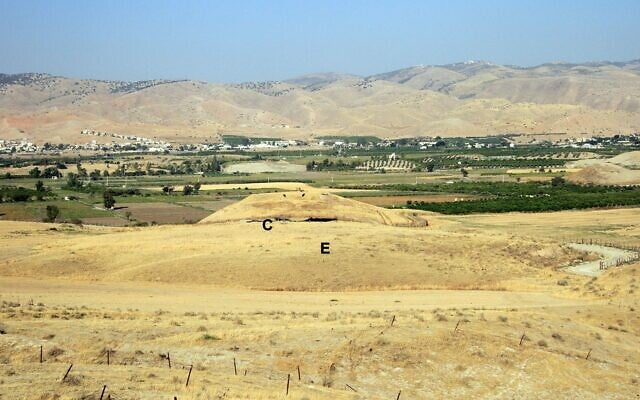First evidence of social beer drinking found in 7,000-year-old town
Archaeologists found starch residue from wheat and barley grains in ancient pottery in the Jordan Valley

Your support helps us to tell the story
From reproductive rights to climate change to Big Tech, The Independent is on the ground when the story is developing. Whether it's investigating the financials of Elon Musk's pro-Trump PAC or producing our latest documentary, 'The A Word', which shines a light on the American women fighting for reproductive rights, we know how important it is to parse out the facts from the messaging.
At such a critical moment in US history, we need reporters on the ground. Your donation allows us to keep sending journalists to speak to both sides of the story.
The Independent is trusted by Americans across the entire political spectrum. And unlike many other quality news outlets, we choose not to lock Americans out of our reporting and analysis with paywalls. We believe quality journalism should be available to everyone, paid for by those who can afford it.
Your support makes all the difference.The first evidence of social beer drinking has been found in a 7,000-year-old town, researchers say.
Archaeologists from the University of Haifa found starch residue from wheat and barley grains in ancient pottery in Tel Tsaf, which is located in the central Jordan Valley. The town dates back to the Chalcolithic era, from around 5000 BCE.
Beer was used in antiquity for both ceremonial and religious purposes, but new evidence suggests that it was drunk socially in the Levant before alcohol was more prevalent in the Bronze Age (circa 3300 BCE).
When the researchers studied the starch under a microscope, they found signs of fermentation, which suggests its use in alcohol production.
The University of Haifa’s Professor Danny Rosenberg said this evidence of beer production adds to “the evidence we’ve previously uncovered of Tel Tsaf’s prosperity, expressed in its accumulation of agricultural produce, and particularly cereal, in large quantities”.
He continued, saying “We can imagine Tsaf’s developing community holding largescale events in which large quantities of food and beer are consumed in a social context – and not just in a ceremonial context.”
Professor Rosenberg participated in a previous study carried out in 2014, which found evidence of beer production at a Natufian burial site located in Mount Carmel, from some 14,000 years ago. However, they concluded that beer was only used as part of the burial rituals.
Professor Rosenberg has said there has only been minimal evidence of beer consumption in the region prior to the Bronze Age, outside of discoveries made in 2014 and 2021.
He also said Tel Tsaf is one of the only known communities in that region from the Chalcolithic period, where agricultural societies transitioned to larger cities. He said it was difficult to find evidence of beer production and consumption due to the disintegration of organic compounds over time.
“It’s unknown at the moment whether the beer whose remnants we found in Tel Tsaf was produced on a regular basis or specifically for major social events,” said Professor Rosenberg.
He added: “We hope that in the near future, when we can isolate further evidence of beer production at the site and at other sites, we will be able to better understand the role of alcohol in ancient societies, and particularly in those that – as in Tel Tsaf – were on the cusp of significant changes in their social structure as it became more and more complex.”



Join our commenting forum
Join thought-provoking conversations, follow other Independent readers and see their replies
Comments